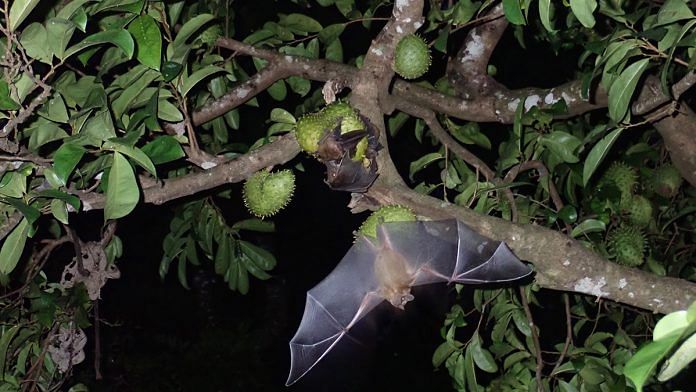New Delhi: While scientists have yet to irrefutably determine the source of the deadly novel coronavirus strain, which has claimed over 4,000 lives worldwide, some studies indicate that the natural host of COVID-19 are bats.
While bats were not sold at the market in Wuhan, the Chinese region where the virus originated, it is believed that they infected live chickens and animals there.
However, this isn’t the first time that humans have been affected by diseases from bats. Germany in 1967 was witness to the Marburg virus, which was also found to be a bat virus. The 2014 Ebola outbreak in West Africa can also be traced back to bat roosts in caves, trees and buildings. Even the Nipah virus, which spread havoc in India in 2018 and killed multiple people, emerged from the fruit bat.
According to a report in The Spectator, the fact that bats are mammals, like humans, is one of the major reasons for the spread of these deadly viruses. Both human and bat bodies are “sufficiently related” for the viruses to thrive.
Bats are also not domesticated. Over time, humans have developed an immunity against diseases caused by domesticated animals like cows, pigs and dogs such as measles, smallpox, anthrax and tuberculosis.
Further, bats also prefer to live in large colonies, unlike other mammals such as tigers. Therefore, they host viruses which have the potential of spreading through casual contact.
Also read: Forget coronavirus, homoeopathy can’t cure anything. It’s a placebo, at best
Bats’ immune system
According to previous studies, a bat’s immune system is especially adept at withstanding viral infection because of its ability to limit excessive inflammation — which uniquely allows viruses to thrive without proving deadly to the mammal.
A recent study titled ‘Accelerated viral dynamics in bat cell lines, with implications for zoonotic emergence’, states that these viruses have also gotten better at spreading quickly from cell to cell in order to counter the bat’s immune system.
This, in turn, proves to be even more harmful to mammals who haven’t developed a similarly strong immune system.
Kevin Olival, a disease ecologist with EcoHealth Alliance in New York City, said, “There’s a lot we can learn from bats about their immune system and take some of that information to think about our own health and developing our own therapeutics”.
Also read: 10 reasons why you don’t need to panic about coronavirus






